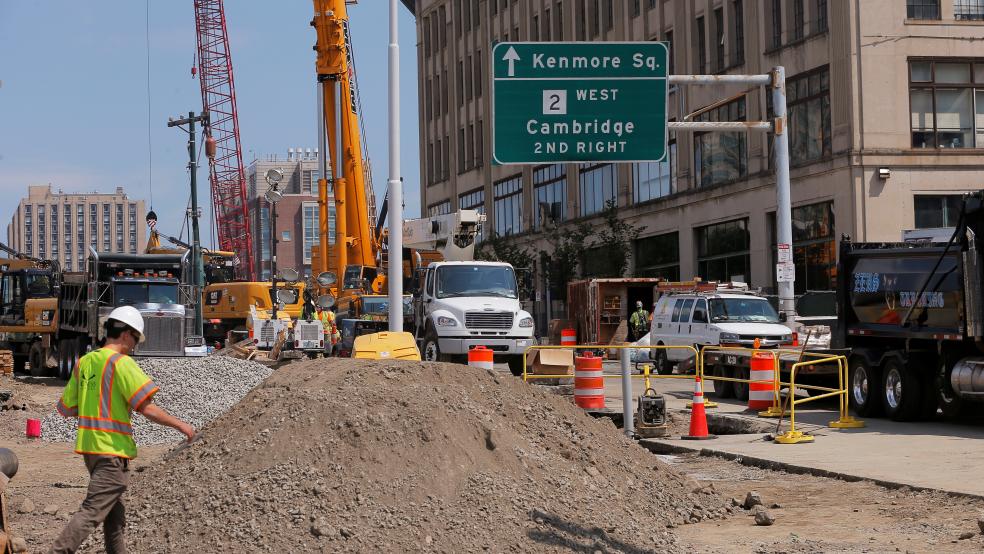House Democratic leaders on Wednesday unveiled the framework for a $760 billion, five-year package that aims to rebuild U.S. infrastructure and cut carbon pollution but does not yet provide specifics about how to pay for the proposed spending.
The plan calls for investments in roads, bridges, rail and transit systems, airports, ports and harbors, water infrastructure, electric grids, broadband internet access and “brownfields,” or land that may have been contaminated by previous industrial use.
“It’s past time to for transformational investments to make our infrastructure smarter, safer, and resilient to climate change, or else we will keep throwing money at an antiquated system that is only holding us and our economy back,” Rep. Peter DeFazio (D-OR), chair of the Transportation and Infrastructure Committee, said.
The Democratic plan proposes to spend:
- $329 billion on surface transportation to modernize the nation’s highways, including an emphasis on fixing the 47,000 structurally deficient U.S. bridges;
- $105 billion on public transit improvement and expansion and $55 billion on railways;
- $86 billion to expand broadband access;
- $50.5 billion on clean water and wastewater infrastructure and $25.4 billion to protect drinking water;
- $30 billion on airports and air travel modernization.
The plan differs significantly from the Trump administration’s proposed infrastructure plan, both in its emphasis on climate change and in its overall structure. The Trump plan, announced nearly two years ago, called for spending $200 billion in federal money over a decade as a way to encourage infrastructure spending at other levels of government and in the private sector. But the Trump plan failed to gain any traction on Capitol Hill as the administration focused first on tax cuts and an attempt to repeal Obamacare.
Reviving negotiations with the White House: “The proposal is intended to get U.S. President Donald Trump to return to the bargaining table,” Reuters’ David Shepardson says. Last year, Trump and Democratic leaders agreed in principle to spend $2 trillion in infrastructure, but they did not work out how to pay for it, and talks broke down after Trump lashed out about investigations into Russian interference in the 2016 elections.
The funding question still looms large: "This is a big step, and a major expense," House Speaker Pelosi said. "We have to find the funding for it." But the question of funding has always been a point of contention when it comes to infrastructure. “Paying for any massive infrastructure initiative is always a tricky issue, especially considering that the simplest option — a hike to the gasoline tax, which hasn't been raised since 1993 — has been a political non-starter for most lawmakers in both parties,” Wolfe writes. Democrats will look to reach a deal with the White House before discussing how to pay for their plan.
Not happening any time soon: Pelosi did not lay out any timeframe for a House vote on legislation built on this framework. "We'll go to the floor when we're ready," she reportedly said. “We're not talking about next week.” Lawmakers face a September 30 deadline to reauthorize a five-year highway spending bill.





